- Ask a related questionWhat is a related question?A related question is a question created from another question. When the related question is created, it will be automatically linked to the original question.
This thread has been locked.
If you have a related question, please click the "Ask a related question" button in the top right corner. The newly created question will be automatically linked to this question.
Hi, TI.
I designed a trans-impedance amplifier circuit using a LMP7721, INA321 and REF2030.
The INA321 was used to amplify the fluctuating voltage signal based on 1.5 volts.

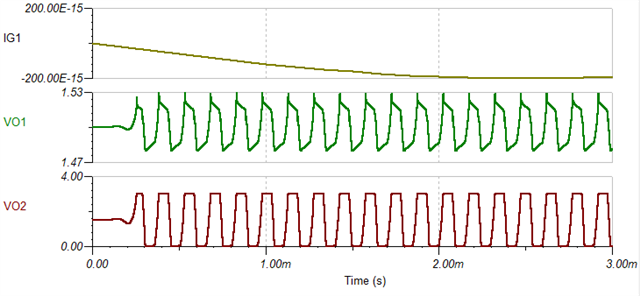
Hi Yunsik,
even without running a phase stability analysis, I would say that 300pF is a very high detector capacitance and that a 3pF phase-lead capacitance will be way too small to recover the phase margin to a sane value. So both circuits appear to me to be unstable. A 10pF phase-lead capacitance looks way better to me.
Please carry out a phase stability analysis!
Kai
Hhm, I see another issue: Keep in mind that the REF2030 generates a lot of noise! 0.25ppm / SQRT(Hz) equals a spectral noise density of 313nV / SQRT(Hz). This is 40 times the noise level of LMP7721
Therefore you would urgently need some noise filtering at the output of REF2030
Kai
Hi Kai,
I carried out a phase stability analysis on the first stage.
Because the feedback resistor R4 had very large resistance, I guess the stability of first stage is not a problem.
Or should I try a multiple feedback loop analysis?


And, here I have another question.
I chose the largest resistor to boost the gain.
However, I found the bandwidth of the TIA was too low ( < 100 Hz).

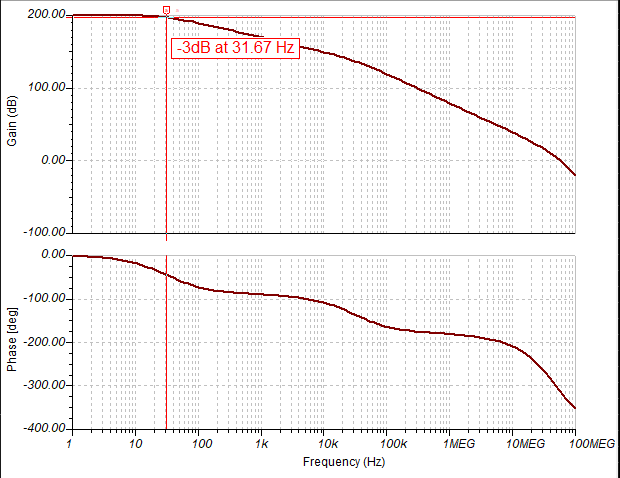
Hi Yunsik,
Kai is correct, high C in the feedback may lead to gain peaking and stability issues. To learn more about compensating transimpedance amplifiers, please refer to the following note: https://www.ti.com/lit/an/sboa055a/sboa055a.pdf
The bandwidth of your op amp should be chosen based on the source capacitance and feedback components. Equation 4 in the following article shows how to calculate the minimum bandwidth required for a stable TIA design: https://www.ti.com/lit/an/sboa354/sboa354.pdf
Hi Yunsik,
yes, you are right, your circuit is stable
To achieve a bandwidth of 100Hz I would modify your circuit this way:
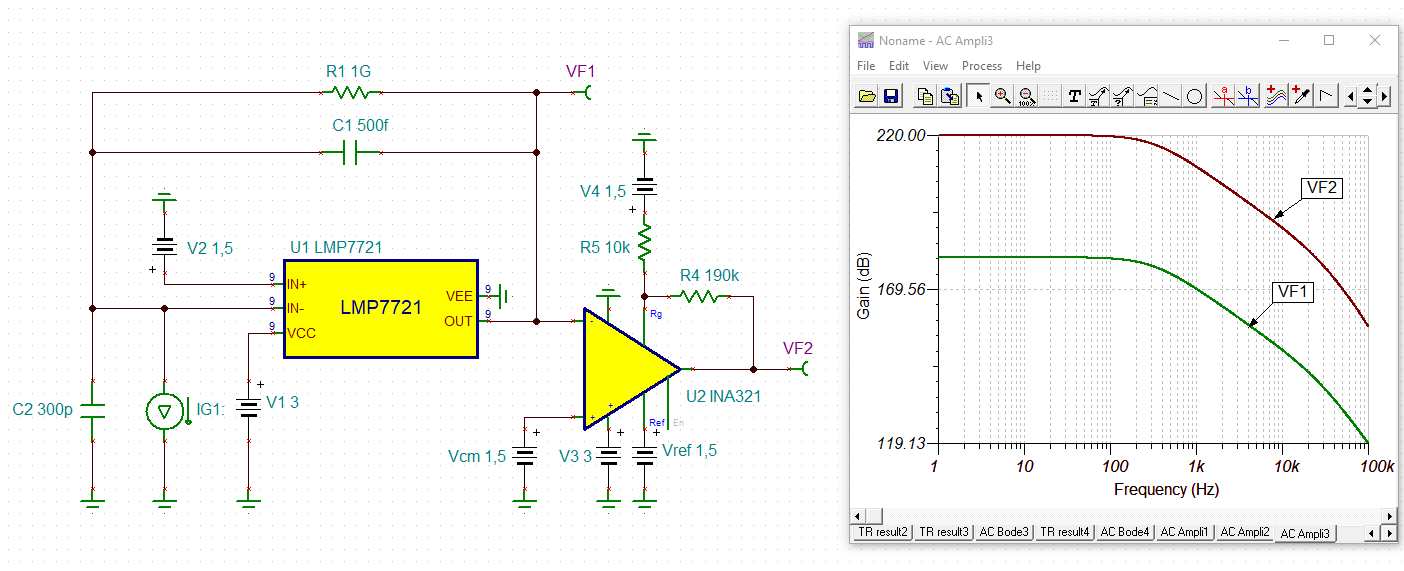

By the way, modify the "Analysis Parameters" this way to get a proper transient analysis:
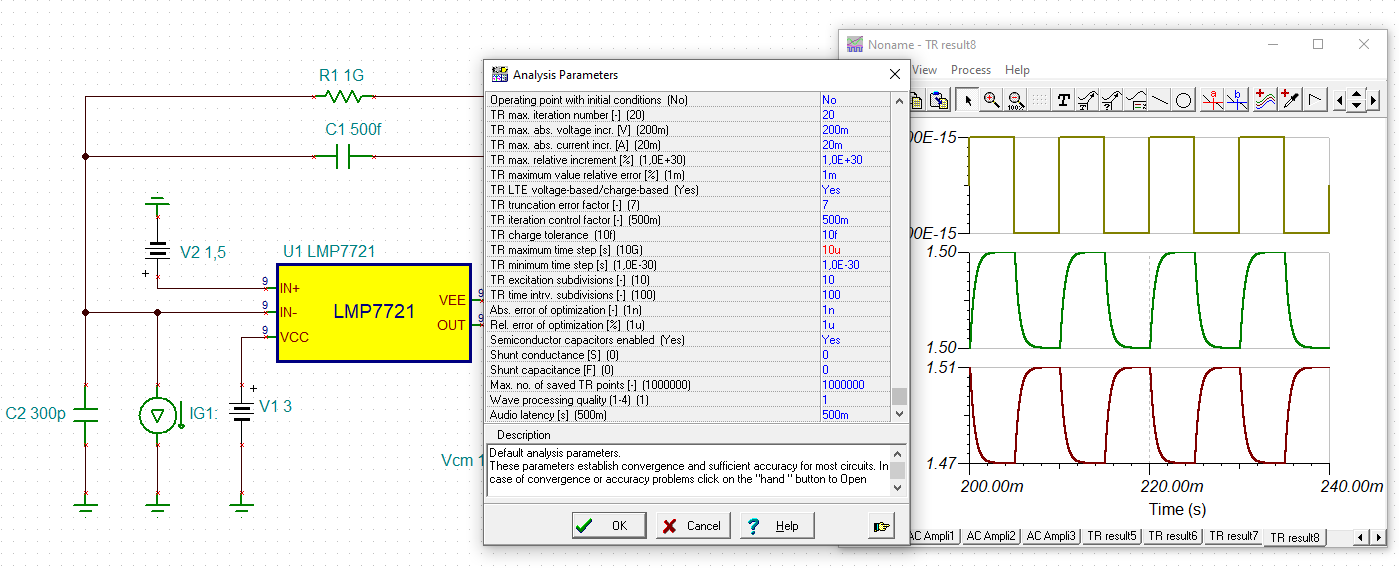
Kai
Hi Kai,
Please let me know how to convert ppm / SQRT(Hz) to V / SQRT(Hz)?
I want to redesign the circuit using REF70 of TI or voltage reference from other companies.
Thank you.
Hi Yunsik,
multiply 0.25ppm / SQRT(Hz) with the output voltage of 1.5V, which gives
1.5V x 0.25 x 10^-6 / SQRT(Hz) = 375nV / SQRT(Hz).
See also figure 35 of datasheet of REF2030.
There's no need to do much redesign of the reference voltage. Just add a heavy RC low pass filter. Something like 1k and 100µF and suited current limiting resistors to protect the inputs of LMP7721 and INA321.
Kai
Hi Kai,
I tried adding an RC low pass filter like below.
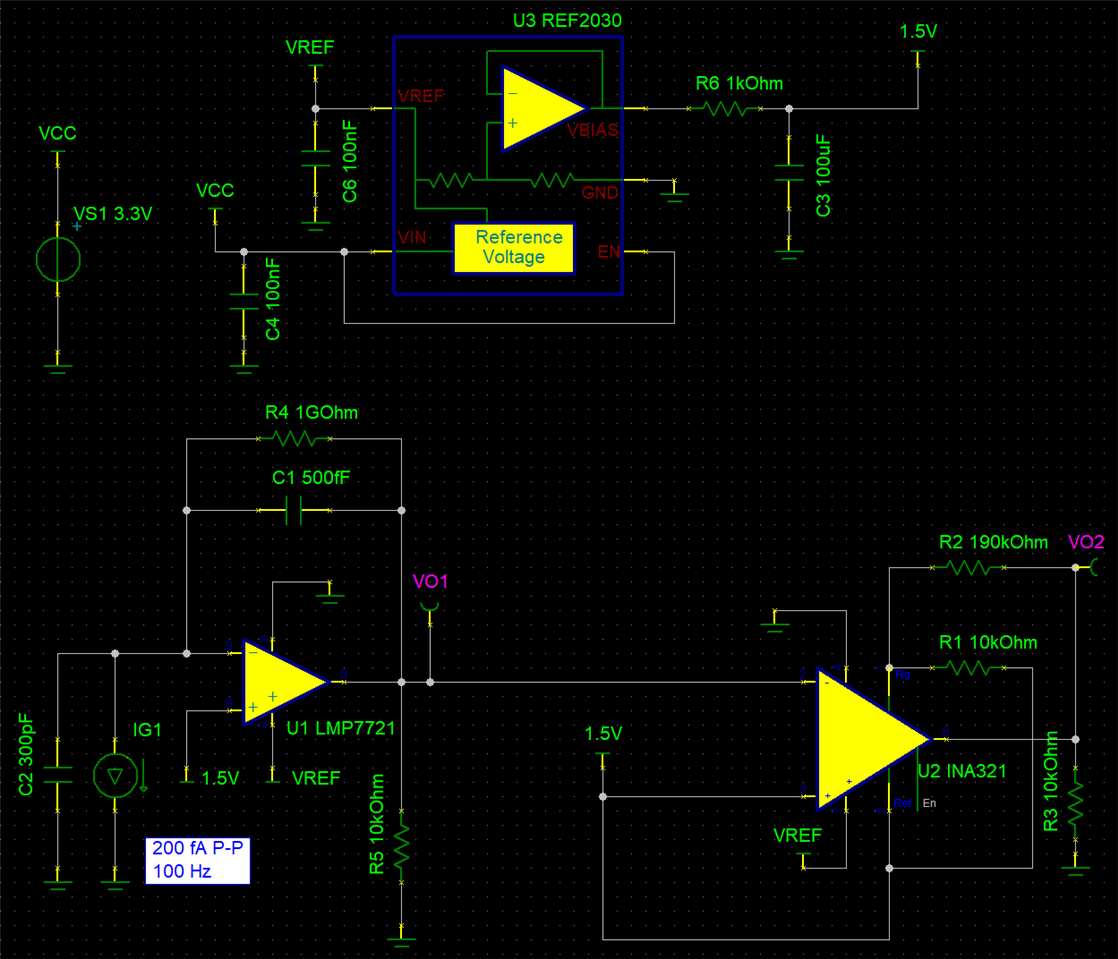
However, the gain curve became weird by unexpected poles and zeros.
Before adding the RC filter is like this. I see gain peaking
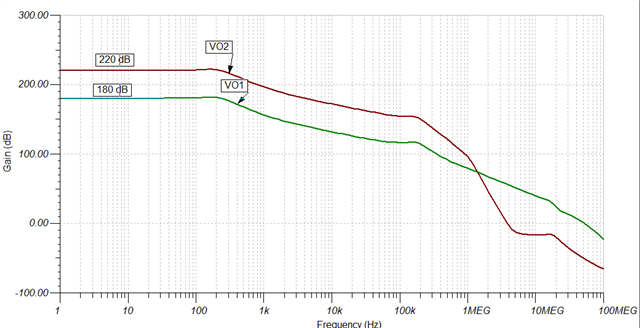
After adding the RC filter is like this. Pole and zero below 1Hz lower the gain.

I modified the circuit design to handle these problems. How about this?
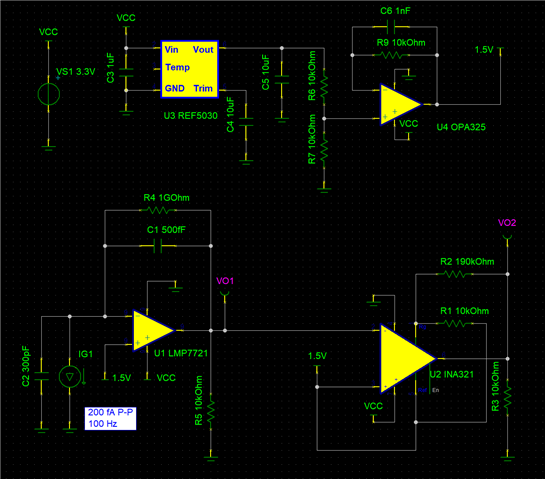
The circuit simulation showed a normal gain curve.
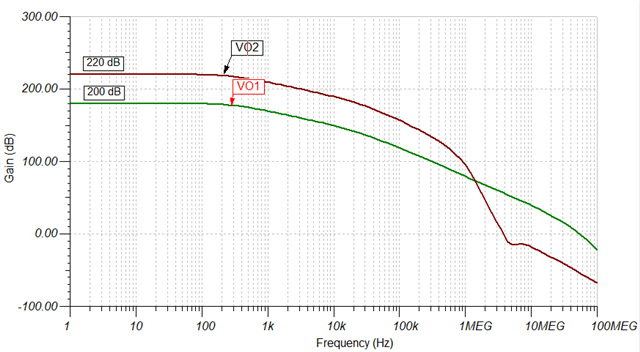
Thank you.
Hi Yunsik,
I meant it this way:
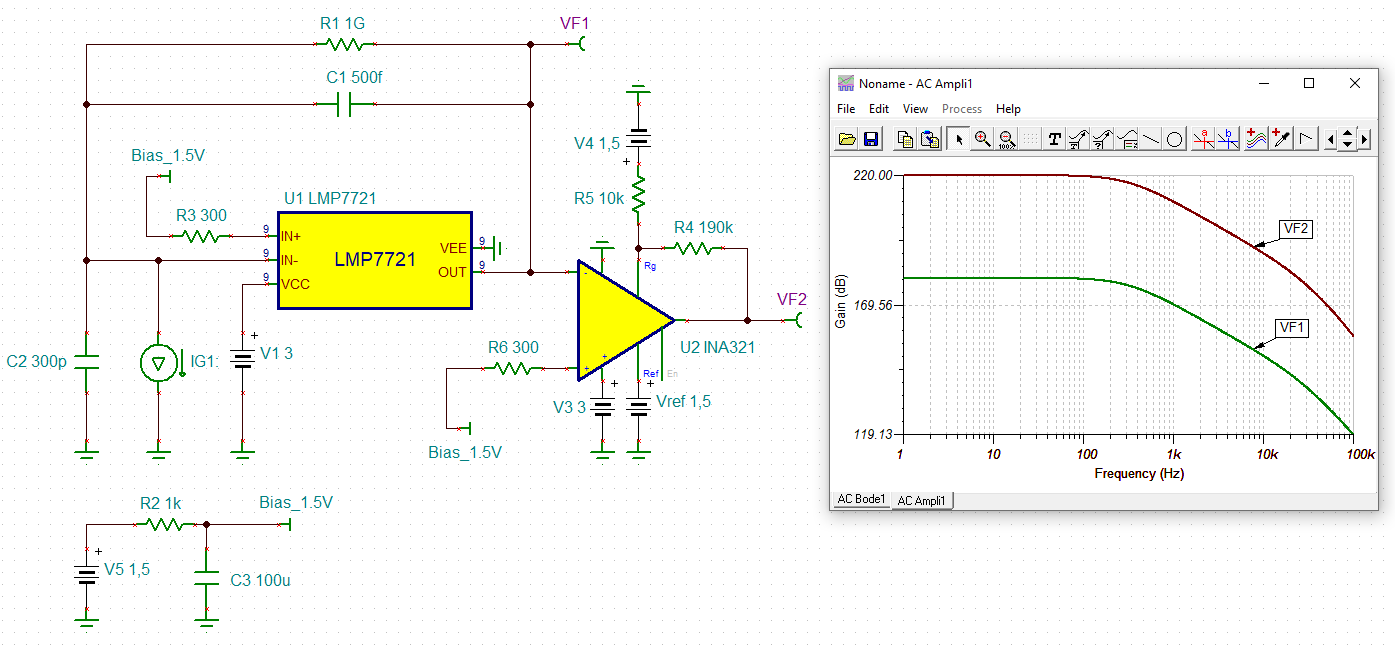
Only the +input of LMP7721 and the +input of INA321 should get the filtered bias voltage, but neither the REF pin of INA321 nor the base point of R5
Kai